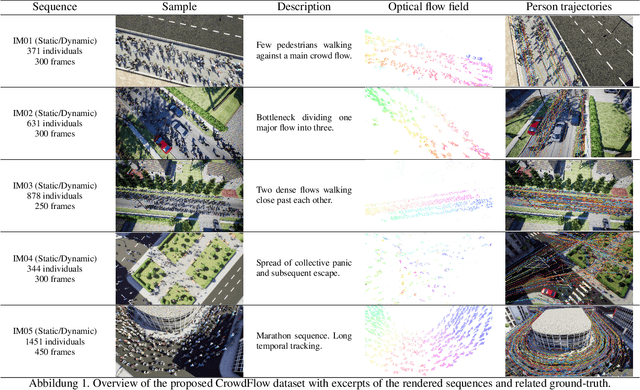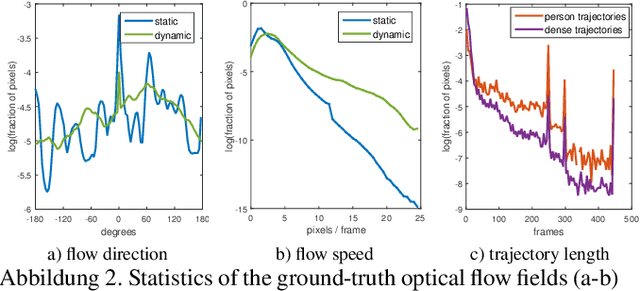Optical Flow Dataset and Benchmark for Visual Crowd Analysis
Paper and Code
Nov 17, 2018

The performance of optical flow algorithms greatly depends on the specifics of the content and the application for which it is used. Existing and well established optical flow datasets are limited to rather particular contents from which none is close to crowd behavior analysis; whereas such applications heavily utilize optical flow. We introduce a new optical flow dataset exploiting the possibilities of a recent video engine to generate sequences with ground-truth optical flow for large crowds in different scenarios. We break with the development of the last decade of introducing ever increasing displacements to pose new difficulties. Instead we focus on real-world surveillance scenarios where numerous small, partly independent, non rigidly moving objects observed over a long temporal range pose a challenge. By evaluating different optical flow algorithms, we find that results of established datasets can not be transferred to these new challenges. In exhaustive experiments we are able to provide new insight into optical flow for crowd analysis. Finally, the results have been validated on the real-world UCF crowd tracking benchmark while achieving competitive results compared to more sophisticated state-of-the-art crowd tracking approaches.
 Add to Chrome
Add to Chrome Add to Firefox
Add to Firefox Add to Edge
Add to Edge